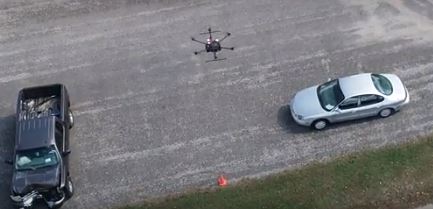The benefits of assessing a crash scene with a drone?
 Secondary traffic accidents are accidents that occur after a first accident mostly because the traffic conditions changed. When a car accident occurs, the road may be blocked for a significant time so that police can proprely assess the accident scene. As a result traffic conditions quickly change, with congestion increasing the risk of additional collisions especially rear-end crashes. Studies show that secondary crashes go up by a factor of almost 24 when highway safety officials are assessing an accident scene.
Secondary traffic accidents are accidents that occur after a first accident mostly because the traffic conditions changed. When a car accident occurs, the road may be blocked for a significant time so that police can proprely assess the accident scene. As a result traffic conditions quickly change, with congestion increasing the risk of additional collisions especially rear-end crashes. Studies show that secondary crashes go up by a factor of almost 24 when highway safety officials are assessing an accident scene.
REDUCED RISK OF TRAFFIC ACCIDENT
To try to speed up the assessment process, Engineers at Purdue University teamed up with the Tippecanoe County Sheriff’s Office to study how drones could help in assessing car accident scenes. They found that drones can significantly reduce the time to assess a crash scene. A drone can typically assess a crash scene in 5 to 8 minutes. As a result safety improves for everybody involved, from officers securing and assessing the scene of the accident to emergency responders assisting the victims and regular road users stuck in the traffic congestion created by the accident. The faster the road is back to normal conditions, the safest it is for everybody.
When assessing the scene of the crash, the drone takes a picture every 2 seconds. The pictures are then used with special software that allows investigators to visualize the scene and do their own measurements and analysis from their desk instead of spending hours at the dangerous crash scene. The software can also create 3D prints for evidence. The collaboration between the Purdue engineers and the police officers helps shortening the learning curve in developing and implementing new technology. The experiment convinced the Tippecanoe County Sheriff’s Office that drones were the way to go to assess accident scenes. The next step is to move from a 2 to 3 drone experiment to having all agencies in the State using drones for this purpose.
Read the Purdue Press Release
 New York Personal Injury Attorneys Blog
New York Personal Injury Attorneys Blog


